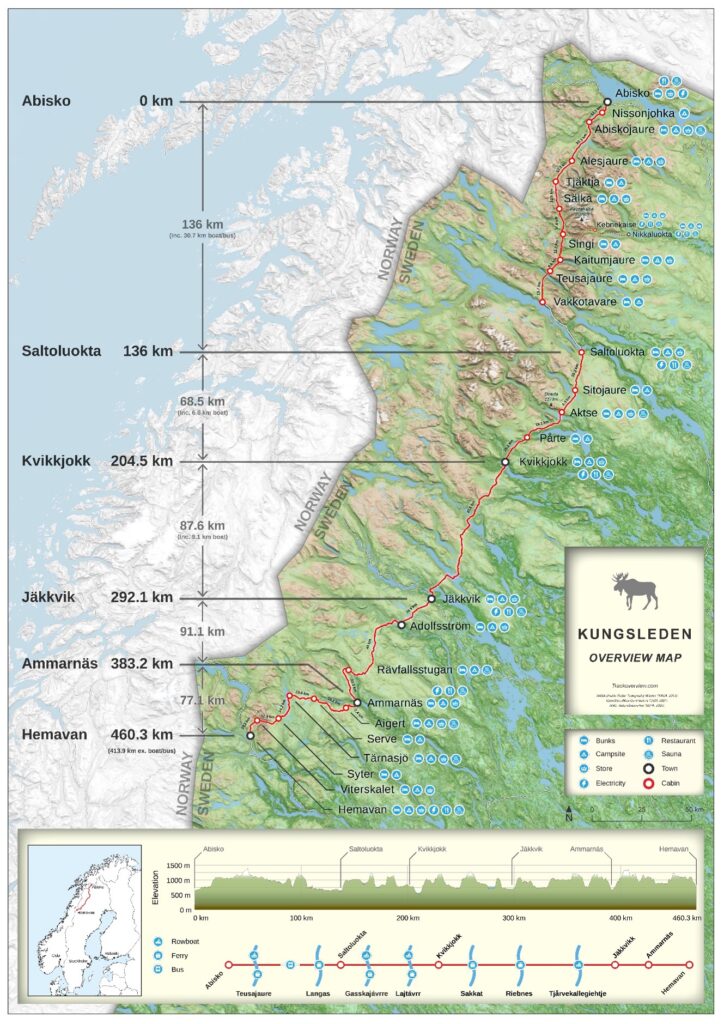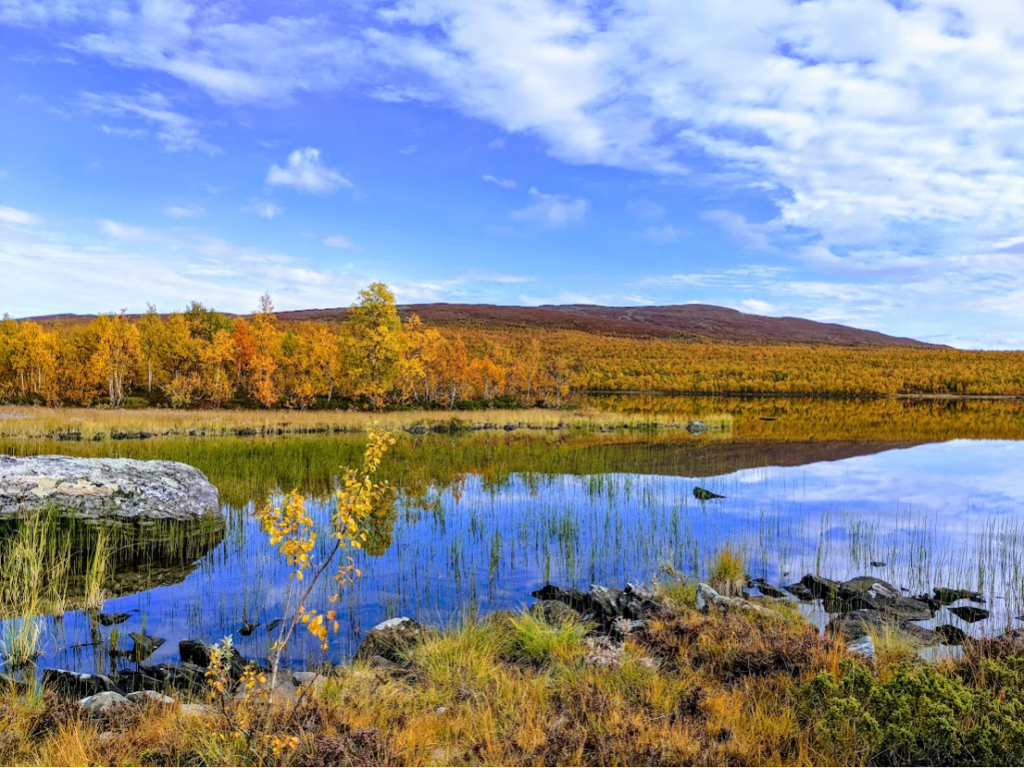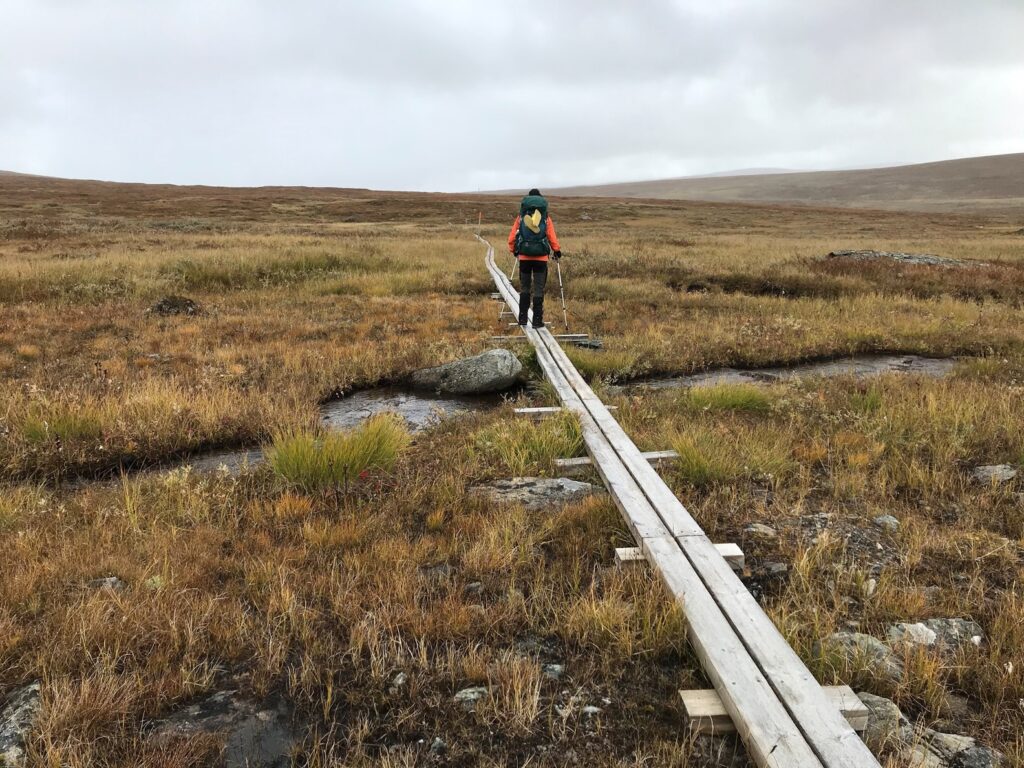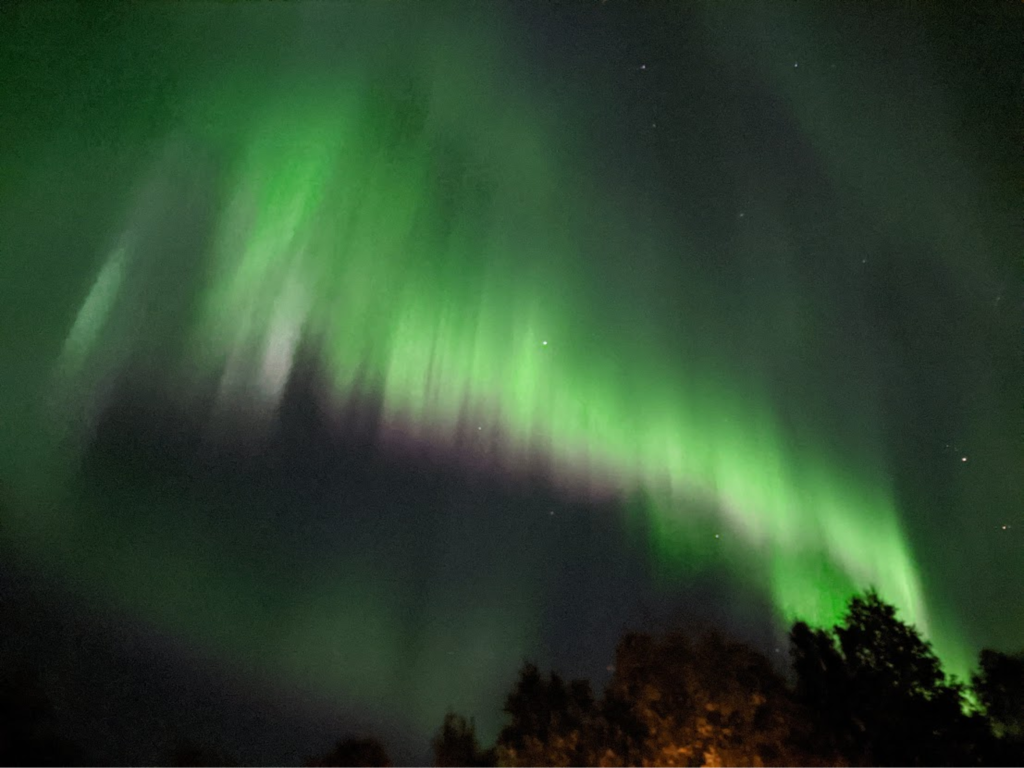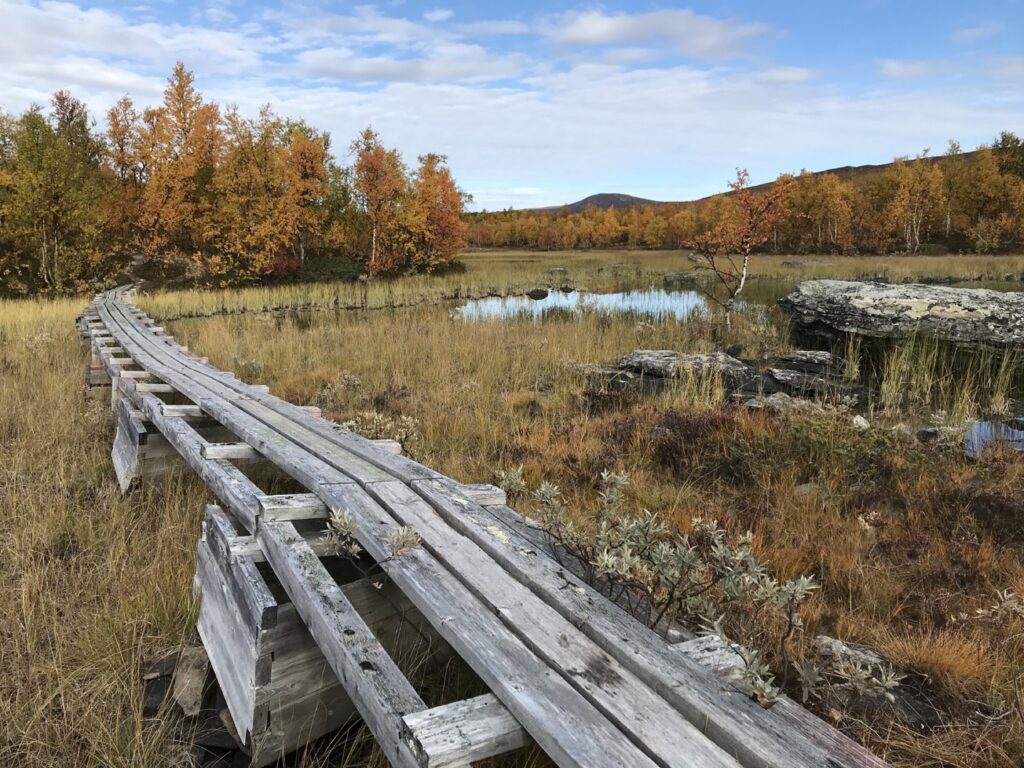
This past September I had the great fortune to hike a portion of the Kungsleden or King’s Trail in Northern Sweden near the Arctic Circle. The Kungsleden spans 285 miles from Abisko to Hemavan through a varied landscape ranging from alpine terrain to low-lying mountain birch forests. The trail lies within Lapland, the ancestral home of the native Sámi who still inhabit the area. The Kungsleden draws hikers from around the world much like the Pacific Crest Trail and the Appalachian Trail in the United States.
The trails passes through four national parks (Abisko, Stora Sjöfallet, Sarek and Pieljekaise) all of which were established by the Swedish Government in 1909 as part of that country’s first conservation act establishing its national park system. These parks were among Europe’s first national parks. The trail also passes through a number of nature reserves including the 2,200 square mile Vindelfjällen Nature Reserve lying between Hemavan and Ammarnäs, one of the largest protected reserves in Europe.
My journey began in Ammarnäs where I met veteran Kungsleden hiker Charlotte Gore who had earlier solo hiked the southernmost segment of the trail beginning in Hemavan. Together the two of us continued northward for nine days across the trail’s least traveled realms to Kvikkjokk. The weather held for most of the trip until the last two days where we encountered a deluge of rainfall that is often common to the region especially in the later summer months. While the weather may be more challenging at the end of summer, there are far fewer people hiking the trail, and there were a number of days where we saw no other hikers.
One of the distinguishing features of the Kungsleden are its red trail markers of painted rocks and tree trunks that are frequently located along the trail. These markers are useful given that segments of the trail are often not well maintained and overgrown with vegetation. The terrain along the trail is generally rocky making for difficult travelling, and those accustomed to hiking 15 to 20 miles a day on the Pacific Crest Trail will find that 10 to 12 miles a day to be an equal challenge. Hiking poles to maintain one’s balance is a necessary accoutrement to a traveler’s gear, especially to traverse the numerous boardwalks that traverse the trail’s marsh lands. The trail is open to winter travelers with some segments being marked by snow poles.
- Source: trackoverview.com
- The author on the first day of his trek. Photo courtesy of Charlotte Gore.
- North of Vuonatjvikens near the Arctic Circle. Photo courtesy of Charlotte Gore.
- Veteran Kungsleden trekker, Charlotte Gore. Photo by author.
- Fall colors along the Kungsleden trail. Photo by author.
- Wood plank walk along the trail spanning wetlands. Photo by author.
- The Northern Lights outside Ammarnäs. Photo courtesy of Charlotte Gore.
- Lake Vuonatjviken. Photo by author.
- Elevated boardwalk through marshlands. Photo by author.
- Reindeer on the horizon. Photo by author.
